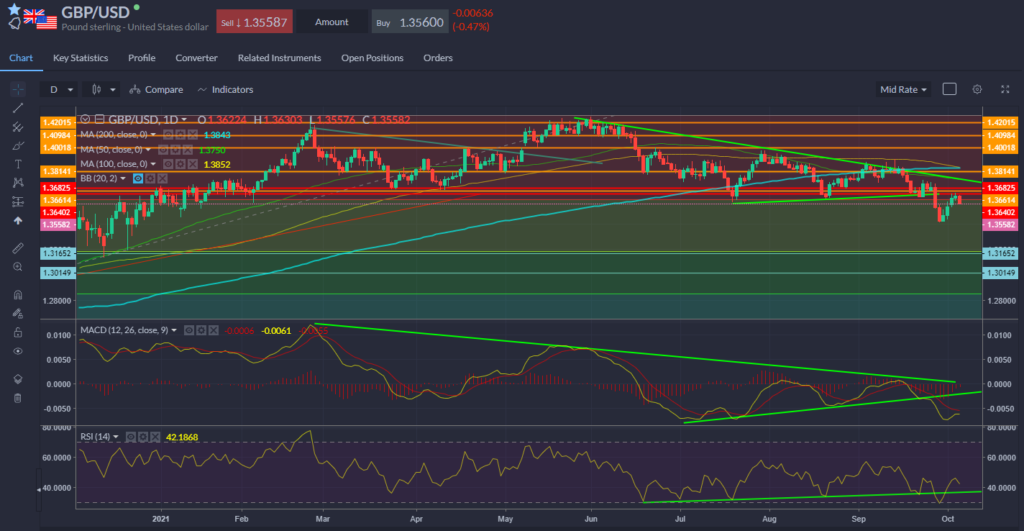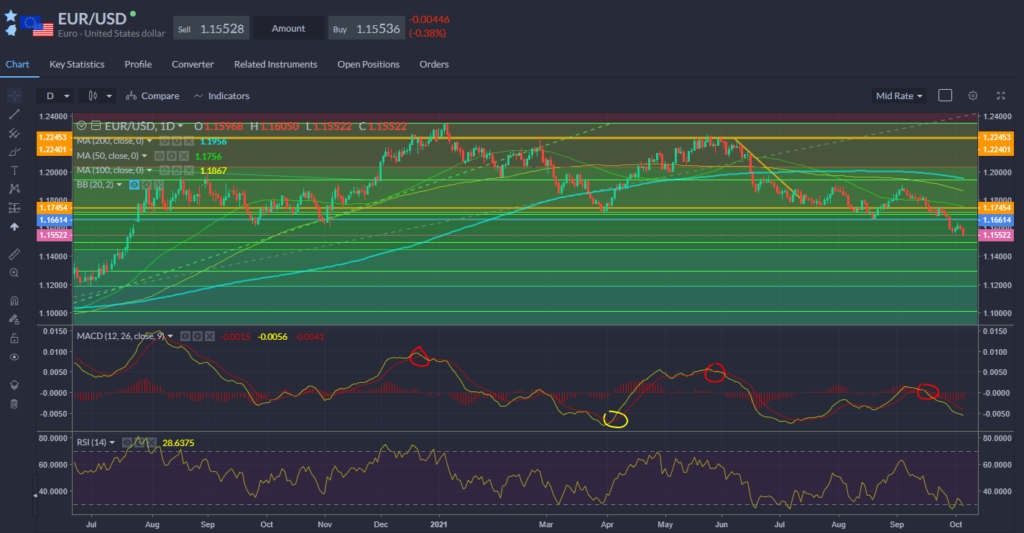
CFDs sind komplexe Instrumente und umfassen aufgrund der Hebelfinanzierung ein hohes Risiko, schnell Geld zu verlieren. 76,3% der Privatanlegerkonten verlieren Geld, wenn sie mit diesem Anbieter CFDs handeln. Sie sollten überlegen, ob Sie wirklich verstehen, wie CFDs funktionieren, und ob Sie es sich leisten können, das hohe Risiko von finanziellen Verlusten einzugehen.
Mittwoch Oct 6 2021 08:31

5 min
Inflation/stagflation, supply chain problems, the US debt ceiling, an energy crisis as natural gas prices soar to new records in Europe and the UK, tighter monetary policy from central banks, worries about the Chinese property sector – all swirling around equity markets this week and not going away any time soon. Chiefly this morning we might say that rising Treasury yields and soaring energy prices are conspiring to knock risk appetite.
European stock markets declined by around 1-2% in early trade on Wednesday despite something of a Tuesday turnaround for the US. The DAX tumbled 2% and under its 200-day moving average as German factory orders declined 7.7% in August amid supply chain problems, a sharp decline from the 4.9% increase in July. Although some of the decline could be a reaction to big jump in July, it’s nevertheless pointing to a slowdown in activity. Motor vehicles and parts were –12%. Meanwhile the British Chambers of Commerce released a survey showing UK companies are deeply worried about inflation and supply chain problems, and it warned that a period of stagflation may be coming. Boris Johnson is due to speak later but I cannot believe he will instil much confidence. The ‘everything is fine’ meme springs to mind… The FTSE 100 fell by more than 1% to under 7,000, though still within its 6-month range.
Wall Street rallied on Tuesday, reversing some of the Monday slip. Mega cap tech rose, whilst energy also rallied again on higher oil prices with WTI approaching $80. Henry Hub natural gas rose to just about its highest level in 13 years, with yesterday’s 9% gain seeing the US contract on the Nymex close at its highest since Dec 2008. Treasury yields are higher again, with 10s at 1.570%, the highest since mid-June. Soaring energy prices are pushing up inflation expectations, pushing up yields and weighing on stocks. The dollar is bit stronger this morning with EURUSD taking a 15 handle again and cable under 1.36. US futures are weaker to the tune of 1%, indicating another rocky session on Wall Street with the S&P 500 ready to test the 4,300 area again.
Tesco shares rose over 4% in early trade after raising its full-year outlook on a profit beat and initiated a £500m share buyback programme. The company said it expects full-year adjusted operating profit of £2.5bn-£2.6bn, about a £100m ahead of analyst expectations, after H1 adjusted retail operating profit rose 16.6%. The strong retail showing reflected UK market outperformance and sharp recovery of Booker catering, management said. Shares in Sainsbury’s also climbed more than 1% despite a soft session for the FTSE 100.
The Reserve Bank of New Zealand raised rates for the first time in seven years, hiking the main cash rate by 25bps to 0.5%. The central bank warned that cost pressures are becoming more persistent and that headline inflation would rise above 4% in the near term. But it was confident that current covid-19-related restrictions ‘have not materially changed the medium-term outlook for inflation and employment’ and that the ‘further removal of monetary policy stimulus is expected over time’.
Oil prices keep on rising with front month WTI approaching $80. APi figures showed inventories increased by 950k barrels for the week ended Oct 1st, vs expectations for a draw of 300,000 barrels. There were also builds for stocks at Cushing, distillates and gasoline. EIA figs today expected to show a build of 0.8m barrels. Small inventory builds in the US won’t really change the narrative.
Finally, Deutsche Bank has a note out today warning about the impact of the shortages in the UK economy, which are beginning to ‘bite’ in the manufacturing sector – important for exports and therefore the currency. “In the medium-term, shortages in sectors like manufacturing should mean that UK suffer from a (relative) fall in output and have to be replaced by imports from abroad, weakening the current account and the pound,” they say. GBPUSD trades noticeably weaker today but it’s more a dollar move after a decent recovery over the last 4 sessions and with EURUSD also moving to its weakest since last July.


